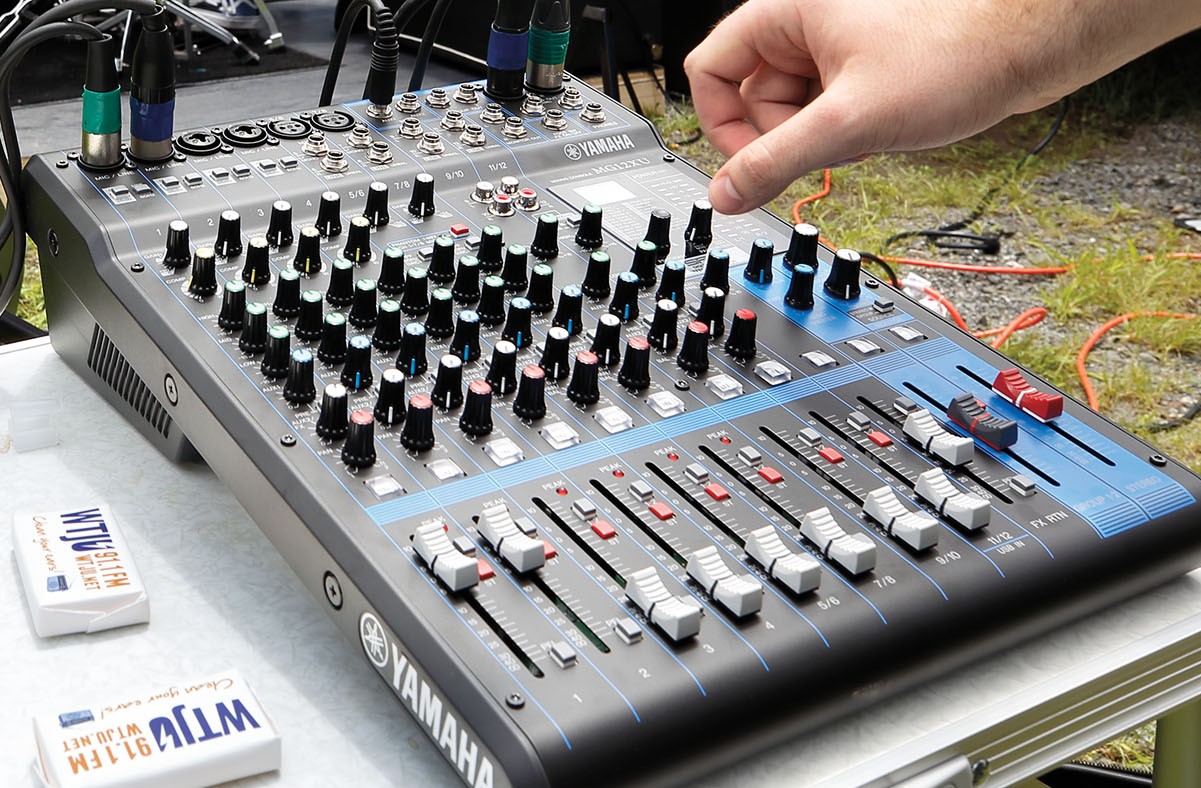
What is an audio mixer? An audio mixer is a device that combines, balances, and adjusts different audio signals into one cohesive sound. Whether you're a budding musician, a podcaster, or just curious about sound engineering, understanding audio mixers can be a game-changer. These devices are essential in recording studios, live concerts, and even in your favorite TV shows. They help control the volume, tone, and effects of various audio inputs, ensuring everything sounds just right. From adjusting the bass in a rock concert to balancing dialogue in a movie, audio mixers play a crucial role. Ready to dive into the world of audio mixers? Let's get started!
What is an Audio Mixer?
An audio mixer is a device that combines multiple audio signals into one or more output signals. It's essential in music production, live performances, and broadcasting. Here are some interesting facts about audio mixers.
- The first audio mixer was invented in the 1920s to manage sound for radio broadcasts.
- Analog mixers use physical knobs and faders, while digital mixers use software interfaces.
- Mixers can be as small as a smartphone or as large as a room.
- The largest audio mixer ever built had over 500 channels.
- Audio mixers are used in various fields, including music, television, film, and live events.
Types of Audio Mixers
Different types of audio mixers serve different purposes. Understanding these types can help you choose the right one for your needs.
- Analog Mixers: These are traditional mixers with physical controls. They are known for their warm sound quality.
- Digital Mixers: These mixers use digital signal processing (DSP) to manipulate audio. They offer more features and flexibility.
- Powered Mixers: These have built-in amplifiers, making them ideal for live sound applications.
- Software Mixers: These are virtual mixers that run on computers or mobile devices. They are popular in home studios.
- Hybrid Mixers: Combine analog and digital elements, offering the best of both worlds.
Key Components of an Audio Mixer
An audio mixer consists of several key components that work together to manage audio signals.
- Channels: Each input on a mixer is called a channel. Mixers can have anywhere from a few to hundreds of channels.
- Faders: These sliders control the volume of each channel.
- EQ (Equalization): Adjusts the balance of different frequency components in an audio signal.
- Aux Sends: These allow you to send a portion of the audio signal to an external device, like a reverb unit.
- Pan Controls: These adjust the stereo position of the audio signal.
Uses of Audio Mixers
Audio mixers are versatile tools used in various applications. Here are some common uses.
- Music Production: Mixers are essential in recording studios for combining multiple tracks into a final mix.
- Live Sound: Used in concerts and events to manage sound from multiple microphones and instruments.
- Broadcasting: Radio and TV stations use mixers to manage audio from different sources.
- Podcasting: Podcasters use mixers to combine voice, music, and sound effects.
- Film Production: Mixers are used on film sets to manage dialogue, sound effects, and background music.
Interesting Facts About Audio Mixers
Here are some fun and lesser-known facts about audio mixers.
- The term "mixing board" is often used interchangeably with "audio mixer."
- Some high-end mixers can cost as much as a luxury car.
- The Beatles' album "Sgt. Pepper's Lonely Hearts Club Band" was one of the first to use an 8-track mixer.
- Modern digital mixers can store and recall settings, making it easier to manage complex setups.
- Some mixers have built-in effects like reverb and delay.
- Audio mixers can be controlled remotely using apps on smartphones or tablets.
- The sound quality of a mixer can significantly impact the overall quality of a recording or live performance.
The Final Beat
Understanding audio mixers can transform your sound game. These devices, whether analog or digital, are essential for blending multiple audio sources into a harmonious output. From balancing levels to adding effects, mixers offer a world of possibilities for both amateurs and professionals.
Knowing the difference between mono and stereo channels, the importance of EQ controls, and the role of auxiliary sends can make a huge difference in your audio projects. Plus, being aware of the various types of mixers, like live sound mixers and studio mixers, helps you choose the right tool for the job.
Whether you're setting up a home studio or managing live events, a good grasp of your mixer’s capabilities is key. So, dive in, experiment, and let your creativity flow. Your audience will thank you for the crisp, clear, and captivating sound.
Was this page helpful?
Our commitment to delivering trustworthy and engaging content is at the heart of what we do. Each fact on our site is contributed by real users like you, bringing a wealth of diverse insights and information. To ensure the highest standards of accuracy and reliability, our dedicated editors meticulously review each submission. This process guarantees that the facts we share are not only fascinating but also credible. Trust in our commitment to quality and authenticity as you explore and learn with us.
